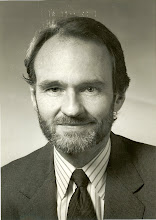Let us look to the US for a moment; after all, we own the key to a better economic world.
Paul Volker, when addressing a conference at Gleneagles in Scotland last week said that, “We can no longer look to China to rescue the world. The Chinese economy has slowed 50pc since its peak and is no longer able to support international growth. Europe is in or near recession, including the UK. So don’t look to the UK, to China, Brazil or India — the US is the only country that can create the type of economic hope and market leadership the world needs. We have a weaker platform than we used to but it is still the most important platform in the world.”
Most of us knew that but it’s nice to hear it from this gentleman, the finest central banker of our generation, a Fed chairman who arrived by the way of merit, not by the way of political promiscuousness. Volker also noted at that conference that re QEIII, “…it will fail to fix the problem. There is so much liquidity in the market that adding more is not going to change the economy.” Correct.
Now, many observers have the US heading for a stall; some, even worse, 2013. Some of this is of course tagged to the “fiscal cliff,” some to a flagging world economy. They will be right, unless…
First, a brief look at key US sectors as they exist at this writing - our version of “around the US in 60 seconds.”
Trend job creation is about 150M per month, consistent with maybe 1.5% - 2% growth. / Both personal and disposable income rose modestly, last look, reflecting the so-so gains in jobs, a steady workweek and sluggish hourly earnings. / Inflation pressures at the consumer level jumped in Aug and are now 1.7% above their year ago level; they have been slowly retreating from Sep/11’s 3.9%; “core” prices are 1.9% above their year ago level. No one seems worried. / Real consumer spending is up moderately but on a trend basis (year-over-year) has slowed over the past 1-1/2 years. / US manufacturing is slowing less than elsewhere in the world but we saw that in Aug production finally followed orders lower. / Nondefense capital goods shipments, proxies for capital spending, are modestly above their Q2 levels, suggesting that capital spending should accelerate slightly in Q3. / The trade picture has changed little, with both exports and imports retreating slightly. / Housing has entered a recovery phase but from a very depressed level. For example, new home sales are now 25.3% above their year ago level and have been on a gentle rising trend over the past year. Nevertheless, they are still a stunning 73.2% BELOW their July 2005 peak.
Next, we want to know where if anywhere there may be a major surprise just ahead vs present Street view; that is, vs that which is priced in the FI market. There is little potential for surprise, + or -, for any sector, our view. If it does exist, it will reside with consumption, where the risk is for something just a tad stronger than expected into year end.
We all understand that jobs creation is the key to our economic health past year end and by linkage, to that of most of the free world. And real jobs creation won’t happen until the playing field is leveled and the burden lifted from employers and consumers and until the rules and penalties no longer change every Qt. Many left-leaning economists and politicians are in denial regarding this matter but as Irwin Stelzer noted recently in the Weekly Standard, one of their own - Lyndon Johnson - was not similarly confused. Johnson proposed to Congress that it get the economy moving by 1) cutting spending and 2) lowering taxes. As Stelzer reports, “Cut spending and taxes right now, he urged, to eliminate uncertainty. This left-leaning president delivered a State of the Union Address that argued, ‘The most damaging and devastating thing you do to any businessman in America is to keep him in doubt and to keep him guessing on what our tax policy is.’ Add guessing as to health care costs and from many businessmen’s point of view you have a recipe for inaction, for not expanding staff. Tenured academic economists might think businessmen don’t need certainty, but then they are not the best judges of what makes risk takers run.”
So there is hope if we have the leadership (as they have had in Canada) to articulate this truth to the masses, and get that done before November; if that is accomplished, we are off to the races.
Robert Craven
